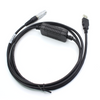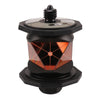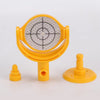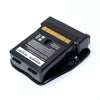Buying Guide: 5 Key Indicators to Choose the Best Carbon Fiber Tripod
For professionals in surveying, engineering, and photography, stability is non-negotiable. The Carbon Fiber Tripod has become the industry standard for those who refuse to compromise between portability and performance.
Unlike traditional aluminum tripods, a high-quality Carbon Fiber Tripod offers an exceptional strength-to-weight ratio, exceptional damping properties to minimize vibration, and resistance to environmental corrosion, making it an indispensable tool for precision work in the field. However, not all carbon fiber tripods are created equal.
5 Key Indicators to Choose the Best Carbon Fiber Tripod
1. Load Capacity: The Foundation of Stability
The most crucial specification is the tripod's maximum load capacity. This refers to the total weight the tripod can securely support without risk of buckling or shaking.
Why it matters: An insufficient load capacity will compromise the stability of your expensive total station, laser scanner, or high-resolution camera. Even slight movement can lead to significant measurement errors or blurred images.
How to choose: Calculate the total weight of your heaviest instrument (including any accessories like a GPS receiver or large lens) and choose a tripod with a load capacity that exceeds this weight by at least 20-30%. This safety margin ensures unwavering stability, even in windy conditions.

2. Height and Portability: Finding the Balance
Consider both the maximum working height and the tripod's collapsed length and weight.
Why it matters: A tripod must be tall enough to allow for comfortable operation without forcing the user to bend over constantly, which improves productivity and reduces fatigue. Conversely, a tripod that is too long when collapsed can be cumbersome to transport to remote job sites.
How to choose: Look for a tripod that extends to your eye level or slightly above. Pay close attention to its collapsed length to ensure it fits easily in your vehicle or carrying case. The inherent lightweight nature of carbon fiber makes achieving this balance much easier than with aluminum.
3. Leg Lock Mechanism: Security and Speed
The mechanism that locks the leg sections in place is vital for both security and ease of use. The two primary types are twist locks and lever locks.
Why it matters: A secure lock prevents leg slippage, which is catastrophic for precision work. The mechanism also affects the speed of setup and breakdown, impacting overall workflow efficiency.
How to choose:
Twist Locks: Offer a sleek profile, are less prone to snagging, and often provide very strong, even clamping force. They can be slower to operate, especially with gloves.
Lever Locks: Allow for much faster deployment and are easier to operate with cold or wet hands. Ensure the levers are robust and made of high-quality materials.

4. Construction and Material Quality
Not all carbon fiber is the same. The number of leg sections, the grade of carbon fiber, and the quality of fittings all contribute to overall performance.
Why it matters: Higher-grade carbon fiber with more layers (often indicated by a higher "X" number, e.g., 8X) offers better vibration damping and rigidity. The number of leg sections also affects stability—fewer sections generally mean greater rigidity but less compactness.
How to choose: Prefer tripods from reputable manufacturers that use high-modulus carbon fiber. Examine the quality of the leg tips, apex casting, and any plastic components. A 4-section tripod offers a good compromise between stability and portability for most users.
5. Feet and Accessories: Adapting to Terrain
The type of feet on the tripod and available accessories determine its adaptability to different surfaces.
Why it matters: A tripod needs to be stable on everything from soft soil and rocky outcrops to smooth indoor concrete.
How to choose: Look for interchangeable feet (e.g., rubber pads for hard surfaces, sharp spikes for soft ground, and claws for uneven terrain). Some models offer accessories like a ground-level extension arm for low-to-the-ground setups, which can be invaluable for specific applications.
Conclusion
Choosing the best Carbon Fiber Tripod is a deliberate process that hinges on understanding load capacity, height requirements, locking mechanisms, construction quality, and adaptability. By meticulously evaluating these five key indicators, you are not just purchasing a support tool; you are investing in the foundational stability that guarantees the accuracy, efficiency, and success of your professional work. A superior tripod protects your valuable equipment, enhances data quality, and improves user comfort on site.

Do not let an unstable foundation be the weakest link in your workflow. For a Carbon Fiber Tripod that excels in all five key indicators and is built to the highest professional standards, ensure you contact the renowned Carbon Fiber Tripod factury, Smtoer.
As a trusted manufacturer and supplier of precision support equipment, Smtoer offers certified, durable, and performance-driven tripods designed for the most demanding environments.
Visit the Smtoer website today to explore their products and find the perfect stable foundation for your precision instruments.




